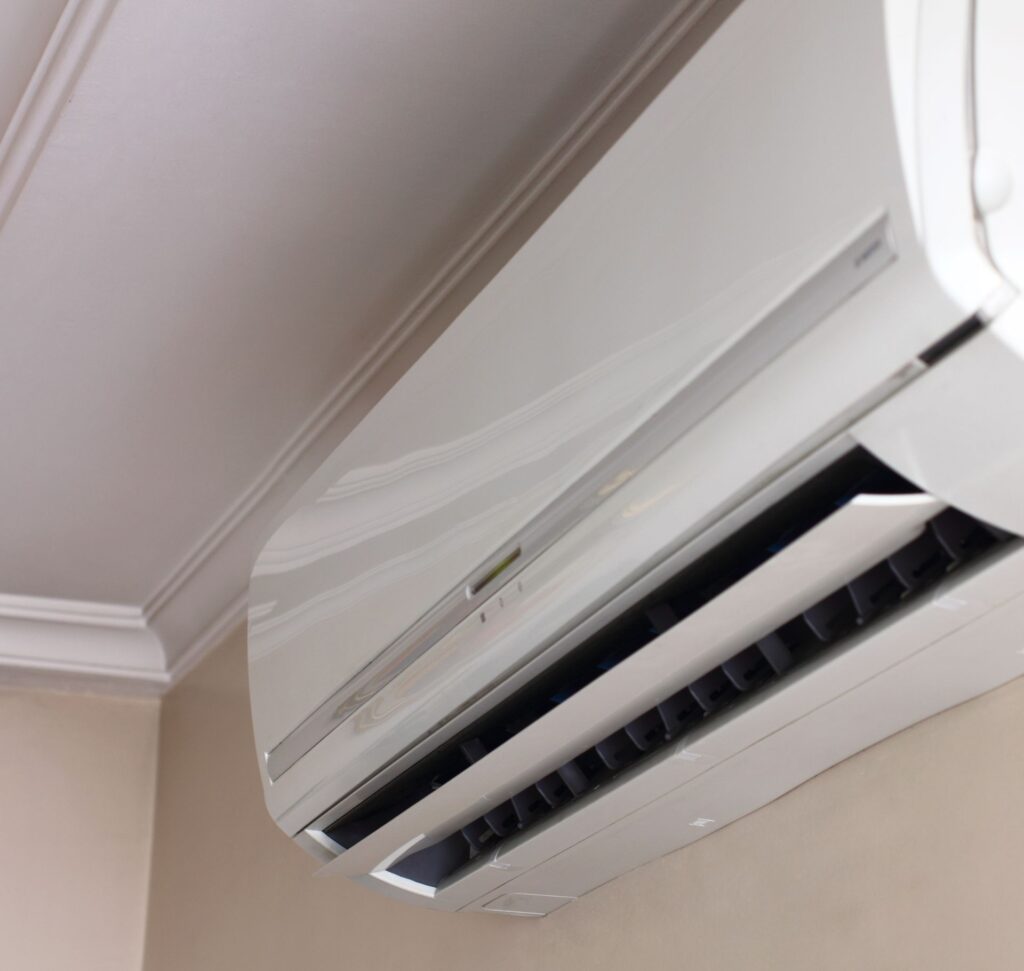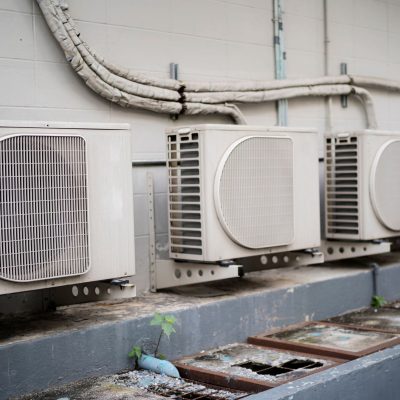What is a Ductless HVAC System?
A ductless HVAC system, also known as a mini-split system, is a heating and cooling system that does not require ductwork for air distribution. Instead, it consists of two main components: an outdoor unit and one or more indoor units. These units are connected by a conduit that houses refrigerant lines, a power cable, and a condensate drain line.
One of the main advantages of a ductless HVAC system is its versatility. It can be installed in a variety of spaces, including homes, offices, and commercial buildings. Since there is no need for ductwork, it is a great option for buildings that do not have existing ducts or where adding ducts would be impractical or expensive.
Additionally, ductless systems allow for zoned heating and cooling, which means that different areas or rooms can be independently controlled for personalized comfort. This not only improves energy efficiency but also reduces utility costs. Overall, a ductless HVAC system provides a flexible and efficient solution for heating and cooling needs.
How Does a Ductless HVAC System Work?
A ductless HVAC system, also known as a mini-split system, operates on the same principles as a traditional central HVAC system. However, it does not rely on a network of ducts to distribute the conditioned air throughout a building. Instead, it consists of two main components: an outdoor unit and one or more indoor units.
The outdoor unit houses the compressor and condenser, which work together to cool or heat the refrigerant. The refrigerant then travels through a line set to the indoor units, where it goes through an expansion valve. As the refrigerant expands, it absorbs heat from the indoor air in cooling mode or releases heat in heating mode.
The fan in each indoor unit circulates the conditioned air back into the room, providing localized temperature control. The indoor units are typically mounted high on the wall or mounted on the ceiling, allowing for flexible placement and maximum efficiency.
One of the key advantages of a ductless HVAC system is its flexibility. Each indoor unit can be independently controlled, allowing occupants to set different temperatures for different zones or rooms. This not only helps to improve comfort but also increases energy efficiency by avoiding the wastage of heating or cooling unused spaces. Additionally, since there are no ducts, energy losses from leaky ductwork are eliminated, resulting in further energy savings.

Advantages of Using a Ductless HVAC System
Ductless HVAC systems offer several advantages that make them a popular choice for heating and cooling homes. One major advantage is their flexibility in installation. Unlike traditional HVAC systems that rely on ductwork, ductless systems are compact and can be installed in spaces where ducts are not practical or possible. This makes them particularly well-suited for older homes or for additions and renovations, where retrofitting ductwork can be expensive and disruptive.
Another advantage of ductless HVAC systems is their energy efficiency. The ductwork in traditional systems can lead to energy loss through leaks and inefficiencies. With ductless systems, the conditioned air is delivered directly to the individual units in each room, minimizing energy waste.
Additionally, some ductless systems come with advanced features, such as programmable thermostats and zoning capabilities, allowing for precise temperature control and further energy savings. The advantages of using a ductless HVAC system include easy installation, energy efficiency, and customizable comfort. These benefits make ductless systems a viable and attractive option for homeowners looking to improve their indoor comfort while saving energy and money.
Factors to Consider Before Installing a Ductless HVAC System
When deciding whether to install a ductless HVAC system in your home, there are several important factors to consider. First and foremost, you need to evaluate the specific needs of your space and the reasons for considering a ductless system. Are you looking to cool or heat a single room or multiple areas? Are there existing ducts in your home that need to be replaced or repaired? Understanding your specific requirements will help you determine if a ductless system is the right choice for you.
Another factor to consider is the installation process. While ductless HVAC systems are generally easier and quicker to install compared to traditional ducted systems, it is still important to assess the level of expertise required for installation. Depending on your comfort level and skill set, you may choose to hire a professional or opt for a DIY approach. It is crucial to ensure that the system is properly installed to maximize its efficiency and performance.
Additionally, consider the maintenance requirements and any ongoing costs associated with the system, such as filter replacements and professional servicing. In conclusion, before installing a ductless HVAC system, it is essential to carefully consider your specific needs, evaluate the installation process, and understand the ongoing maintenance requirements. By taking these factors into account, you can make an informed decision that best suits your comfort and budgetary requirements.
Choosing the Right Size for Your Ductless HVAC System
Choosing the right size for your ductless HVAC system is crucial for optimal performance and energy efficiency. Ductless systems come in various sizes, and selecting the right one is essential to ensure that your system can effectively cool or heat your space without wasting energy or compromising comfort.
One of the key factors to consider when choosing the size of your ductless HVAC system is the square footage of the area you want to cool or heat. A system that is too large for your space will cycle on and off frequently, leading to inefficient operation and higher energy costs. On the other hand, a system that is too small may struggle to maintain the desired temperature, resulting in discomfort. It is important to accurately measure the square footage of the area and consult with a professional to determine the appropriate size of your ductless HVAC system.
Another important consideration is the climate zone you are located in. Each climate zone has different temperature ranges throughout the year, and this can impact the cooling and heating requirements for your space. For example, if you live in a hot and humid climate, you may need a larger system to cool your space effectively. Conversely, if you reside in a colder climate, a smaller system may be sufficient for heating. Accounting for the local climate conditions will help ensure that your ductless HVAC system is properly sized to meet your specific needs.
Installation Process of a Ductless HVAC System
Installing a ductless HVAC system can be a straightforward process that offers numerous benefits. The first step in the installation process is to determine the best location for the indoor and outdoor units. The indoor unit, also known as the air handler, is typically mounted on a wall or ceiling and connected to the outdoor unit through a small hole in the wall. This connection allows the refrigerant lines, drain lines, and electrical wiring to be discreetly hidden.
Once the indoor and outdoor units are in place, the next step is to connect the refrigerant lines. These lines transfer the refrigerant between the units, allowing for efficient heating and cooling. The drain line is also connected to remove any condensation that accumulates during operation. Once the units and lines are connected, the system is then wired to the electrical supply. This ensures that the system has the necessary power to operate effectively.
Finally, the system is tested to ensure that it is functioning correctly and providing the desired heating or cooling. Overall, the installation process of a ductless HVAC system is typically quick and straightforward. However, it is important to consult with a professional HVAC technician to ensure that the system is installed correctly and to address any specific challenges or unique considerations that may arise.
Maintenance Tips for Ductless HVAC Systems
Proper maintenance of your ductless HVAC system is essential to ensure its optimal performance and longevity. By following these simple tips, you can keep your system running smoothly and avoid any potential issues down the road.
Firstly, it is important to regularly clean and replace the filters in your ductless HVAC system. Over time, dust and debris can accumulate on the filters, reducing the airflow and efficiency of the system. By cleaning or replacing the filters every few months, you can ensure that the air quality in your home remains fresh and clean.
In addition to filter maintenance, it is also crucial to regularly clean the outdoor unit of your ductless HVAC system. The outdoor unit can collect dirt, leaves, and other debris, which can inhibit its ability to function effectively. By gently cleaning the outdoor unit with a hose or soft brush, you can ensure that it operates at its best.
Upgrade Your Comfort with HVAC In LA – Your Ductless System Experts
Don’t let the unpredictable weather of Los Angeles compromise the comfort of your home or business any longer. With HVAC In LA, you can experience the ultimate climate control and energy efficiency that only a ductless HVAC system can offer. Whether you’re looking to cool a single room or multiple areas, our team of certified professionals is here to provide you with the best ductless solutions tailored to your specific needs. Contact us today for a consultation and discover how our ductless HVAC systems can transform your space into an oasis of comfort, regardless of the season. Let us help you select the perfect size and model for your needs, ensuring optimal performance and energy savings.


